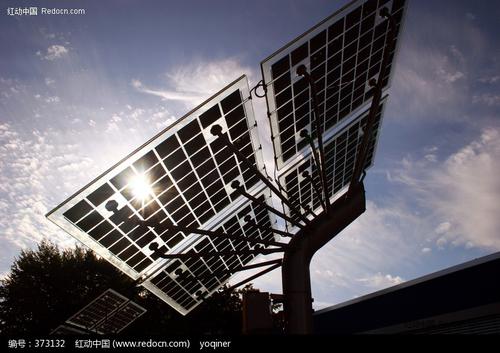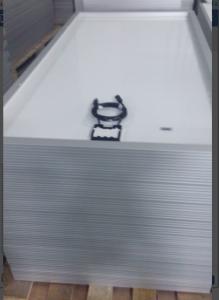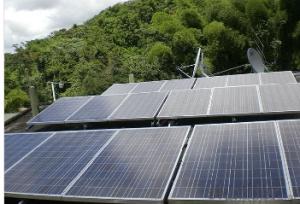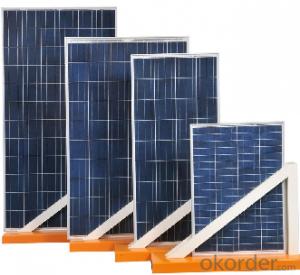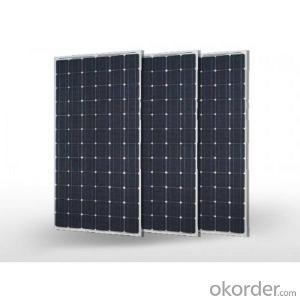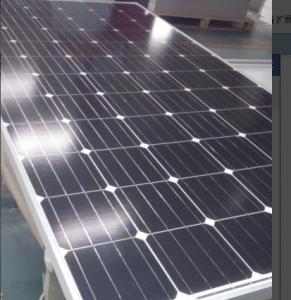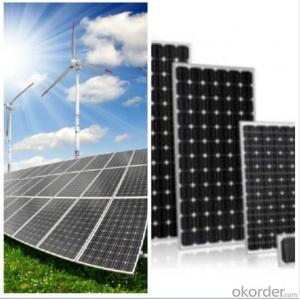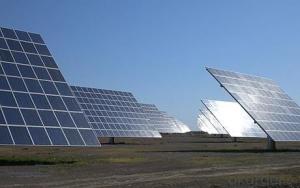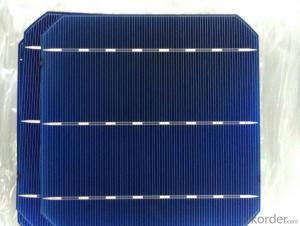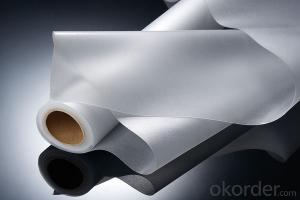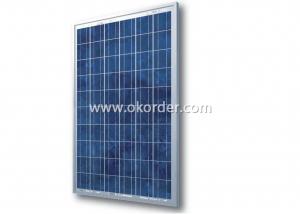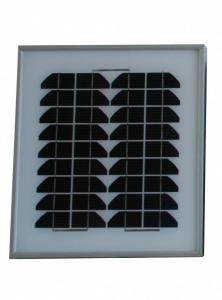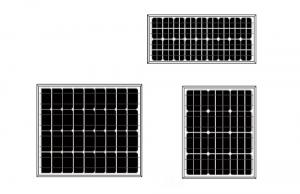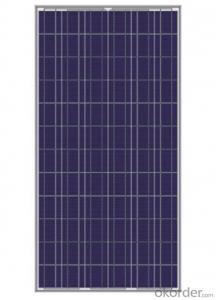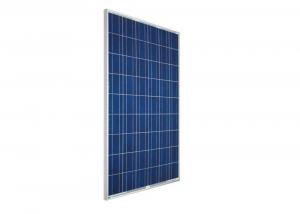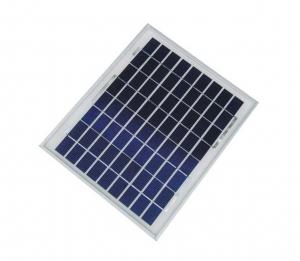Edge Solar Panels
- Loading Port:
- China Main Port
- Payment Terms:
- TT OR LC
- Min Order Qty:
- -
- Supply Capability:
- -
OKorder Service Pledge
OKorder Financial Service
You Might Also Like
Solar Module
ABOUT YINGLI GREEN ENERGY
Yingli Green Energy Holding Company Limited (NYSE: YGE) is one of
the world’s largest fully vertically integrated PV manufacturers, which
markets its products under the brand “Yingli Solar“. With over 7.0GW
of modules installed globally, we are a leading solar energy company
built upon proven product reliability and sustainable performance. We
are the fi rst renewable energy company and the fi rst Chinese company
to sponsor the FIFA World CupTM.
PERFORMANCE
- High effi ciency, multicrystalline silicon solar cells with high transmission
and textured glass deliver a module effi ciency of up to 16.0%,
minimizing installation costs and maximizing the kWh output of your
system per unit area.
- Tight positive power tolerance of 0W to +5W ensures you receive
modules at or above nameplate power and contributes to minimizing
module mismatch losses leading to improved system yield.
- Top ranking in the “TÜV Rheinland Energy Yield Test” and the
“PHOTON Test” demonstrates high performance and annual energy
production.
RELIABILITY
- Tests by independent laboratories prove that Yingli Solar modules:
Fully conform to certifi cation and regulatory standards.
Withstand wind loads of up to 2.4kPa and snow loads of up to
5.4kPa, confi rming mechanical stability.
Successfully endure ammonia and salt-mist exposure at the highest
severity level, ensuring their performance in adverse conditions.
- Manufacturing facility certifi ed by TÜV Rheinland to ISO 9001:2008,
ISO 14001:2004 and BS OHSAS 18001:2007.
WARRANTIES
- 10-year limited product warranty1.
- Limited power warranty1: 10 years at 91.2% of the minimal rated power
output, 25 years at 80.7% of the minimal rated power output.
1In compliance with our Warranty Terms and Conditions.
QUALIFICATIONS & CERTIFICATES
IEC 61215, IEC 61730, MCS, CE, ISO 9001:2008, ISO 14001:2004, BS OHSAS
18001:2007, PV Cycle, SA 8000
ELECTRICAL PERFORMANCE
Electrical parameters at Standard Test Conditions (STC)
Module type YLxxxP-29b (xxx=Pmax)
Power output Pmax W 260 255 250 245 240
Power output tolerances ΔPmax W 0 / + 5
Module effi ciency ηm % 16.0 15.7 15.4 15.1 14.8
Voltage at Pmax Vmpp V 30.3 30.0 29.8 29.6 29.3
Current at Pmax Impp A 8.59 8.49 8.39 8.28 8.18
Open-circuit voltage Voc V 37.7 37.7 37.6 37.5 37.5
Short-circuit current Isc A 9.09 9.01 8.92 8.83 8.75
Electrical parameters at Nominal Operating Cell Temperature (NOCT)
Power output Pmax W 189.7 186.0 182.4 178.7 175.1
Voltage at Pmax Vmpp V 27.6 27.4 27.2 27.0 26.8
Current at Pmax Impp A 6.87 6.79 6.71 6.62 6.54
Open-circuit voltage Voc V 34.8 34.8 34.7 34.6 34.6
Short-circuit current Isc A 7.35 7.28 7.21 7.14 7.07
STC: 1000W/m2 irradiance, 25°C cell temperature, AM1.5g spectrum according to EN 60904-3.
Average relative effi ciency reduction of 3.3% at 200W/m2 according to EN 60904-1.
NOCT: open-circuit module operation temperature at 800W/m2 irradiance, 20°C ambient temperature, 1m/s wind speed.
OPERATING CONDITIONS
Max. system voltage 1000VDC
Max. series fuse rating 15A
Limiting reverse current 15A
Operating temperature range -40°C to 85°C
Max. static load, front (e.g., snow) 5400Pa
Max. static load, back (e.g., wind) 2400Pa
Max. hailstone impact (diameter / velocity) 25mm / 23m/s
CONSTRUCTION MATERIALS
Front cover (material / thickness) low-iron tempered glass / 3.2mm
Cell (quantity / material / dimensions /
number of busbars)
60 / multicrystalline silicon / 156mm x 156mm / 2 or 3
Encapsulant (material) ethylene vinyl acetate (EVA)
Frame (material / color / anodization color /
edge sealing) anodized aluminum alloy / silver / clear / silicone or tape
Junction box (protection degree) ≥ IP65
Cable (length / cross-sectional area) 1000mm / 4mm2
Plug connector
(type / protection degree) MC4 / IP67 or YT08-1 / IP67 or Amphenol H4 / IP68
PACKAGING SPECIFICATIONS
Number of modules per pallet 29
Number of pallets per 40' container 28
Packaging box dimensions
(L / W / H) 1700mm / 1135mm / 1165mm
Box weight 568kg
Unit: mm
• Due to continuous innovation, research and product improvement, the specifi cations in this product information sheet are subject to change
without prior notice. The specifi cations may deviate slightly and are not guaranteed.
• The data do not refer to a single module and they are not part of the offer, they only serve for comparison to different module types
- Q: How do solar panels affect the overall energy consumption of a building?
- Solar panels can significantly reduce the overall energy consumption of a building. By harnessing the sun's energy and converting it into electricity, solar panels provide a clean and renewable source of power. This reduces the reliance on traditional fossil fuel-based electricity, leading to lower energy bills and a reduced carbon footprint. Additionally, excess energy generated by the solar panels can be stored or fed back into the grid, further offsetting the building's energy consumption.
- Q: Ok so i have to solar panels to charge a battery however the panels hooked up in series does charge the battery very slowly because series connections only multiplies the voltage but leaves the current the same. Is there a way i can also hook both of them up in parallel at the same time to multiply the current for faster charge? I know i can do this with 4 panels but i dont want to spend extra. So is there a way to hook up 2 solar panels in series and parallel at the same time? Thanks in advace
- Homemade okorder /
- Q: Can solar panels be damaged by hail or extreme weather?
- Yes, solar panels can be damaged by hail or extreme weather. While solar panels are designed to withstand various weather conditions, including hail, severe storms with large hailstones or intense winds can potentially cause damage to the panels. However, most solar panels undergo rigorous testing to ensure they can withstand such conditions, and many manufacturers offer warranties to cover any damage caused by hail or extreme weather.
- Q: Can solar panels be used to power a sports stadium?
- Yes, solar panels can be used to power a sports stadium. By installing a sufficient number of solar panels on the stadium's roof or surrounding areas, the captured solar energy can be converted into electricity to power various systems within the stadium, including lighting, heating, ventilation, and other electrical equipment. This can reduce the reliance on traditional energy sources and provide a more sustainable and environmentally friendly solution for powering sports stadiums.
- Q: How much energy can a solar panel generate?
- The amount of energy a solar panel can generate depends on several factors, including its size, efficiency, and the amount of sunlight it receives. On average, a typical solar panel can generate between 250 to 400 watts of power per hour. However, larger and more efficient solar panels can produce even higher amounts of energy.
- Q: Could you have a solar panel in space that would transmit electricity remotely? Maybe have some kind of receiving antenna to pick up the energy? Perhaps there could be a string of them orbiting the Earth?Why wouldn't that work?
- Absolutely. Many satellites and other spacecraft that have been launched throughout history carry solar panels to power themselves. The International Space Station alone has hundreds of square meters of solar panels. Transmitting the power from one place to another wirelessly is a bit more difficult, but not fundamentally impossible. So far we don't have any good technology to do it over long distances. But we're getting there. One proposed future source of power is 'solar power satellites', orbiting devices that would collect sunlight and turn it into a microwave laser that would be fired down to the Earth and collected in a giant dish kind of like a radio telescope. The idea is that this would be non-polluting, environmentally friendly, reliable, would help to boost investment in space technologies, and wouldn't take up the large amounts of land area required for traditional solar power. However, some people have argued that it is a bad idea on the basis that if the laser accidentally missed the dish, and came down in an inhabited area, it might cause human fatalities or damage to the environment or human artifacts.
- Q: Does any one know how to make a solar panel or a type of Alternative energy maker. Best answer gets 0 points
- How image voltaic Cells artwork by skill of Scott Aldous interior this text a million. introduction to How image voltaic Cells artwork 2. Photovoltaic Cells: changing Photons to Electrons 3. How Silicon Makes a image voltaic cellular 4. Anatomy of a image voltaic cellular 5. ability Loss in a image voltaic cellular 6. image voltaic-powering a house 7. fixing image voltaic-ability subject concerns 8. image voltaic-ability execs and Cons 9. plenty extra tips 0. See all actual technology articles you have probable seen calculators that have image voltaic cells -- calculators that for the time of no way want batteries, and from time to time do not even have an off button. as long as you have adequate easy, they seem to artwork continuously. you're transforming into seen better image voltaic panels -- on emergency street indications or call bins, on buoys, even in parking plenty to ability lights fixtures. besides the undeniable fact that those better panels are not as common as image voltaic powered calculators, they are obtainable, and not that stressful to discover in case you comprehend the place to look. There are image voltaic cellular arrays on satellites, the place they are used to ability the electrical powered structures. you have probable additionally been listening to with reference to the image voltaic revolution for the final 2 many years -- the thought that at some point we are able to all use unfastened electricity from the solar. that's a seductive promise: On a vivid, sunny day, the solar shines approximately a million,000 watts of ability consistent with sq. meter of the planet's floor, and if we could assemble all of that ability we could extremely ability our homes and workplaces for unfastened.
- Q: im trying to experiment with solar panels. so i dont want to buy a huge expensive solar panel if i dont need one.
- They are powered from internal batteries, so what you really want to do is to charge the batteries. Take them one at a time, as they have different power and voltage requirements. Don't try to do them both together, unless you use an inverter. To directly charge a battery from a solar panel, you need to find out the voltage and current requirements for the charge operation. Then find a solar panel with a voltage somewhat higher. the current can be lower, it will just take longer for the charge. You will have to monitor manually the state of charge of the battery(s) to avoid overcharging and damage. Another alternative is to get a solar panel that will supply 2 volts and use that to operate an inverter that will output 20 VAC with AC sockets on it. then you can plug in the battery chargers that you have, and they will handle the batteries correctly. Or you can buy solar panels with built in circuitry to handle the charge control. .
- Q: Can solar panels be used for off-grid living?
- Yes, solar panels can be used for off-grid living. Solar panels generate electricity by converting sunlight into usable energy, making them an excellent option for those living in remote or off-grid locations. With the right setup, solar panels can provide a reliable and sustainable source of power, allowing individuals to live independently without relying on traditional power grids.
- Q: i need as many bad things there is about solar panels
- They require the use of Silicon which requires refining. This process of refining uses non-ecofriendly chemicals. It damages the environment. Solar panels are only about 20-30% efficient whereas coal is around 60-70%. Solar panels require much space for such small output. Do note, that new solar panels are being worked on and that with the correct alignment of solar cells, solar panels may become ~80% efficient, rendering coal useless.
Send your message to us
Edge Solar Panels
- Loading Port:
- China Main Port
- Payment Terms:
- TT OR LC
- Min Order Qty:
- -
- Supply Capability:
- -
OKorder Service Pledge
OKorder Financial Service
Similar products
Hot products
Hot Searches
Related keywords

